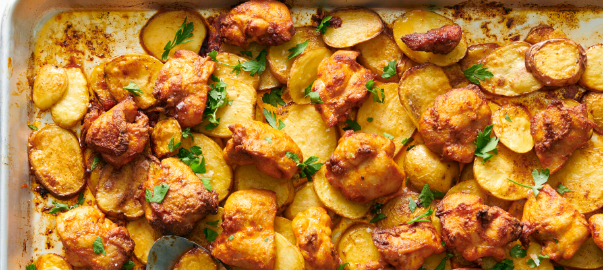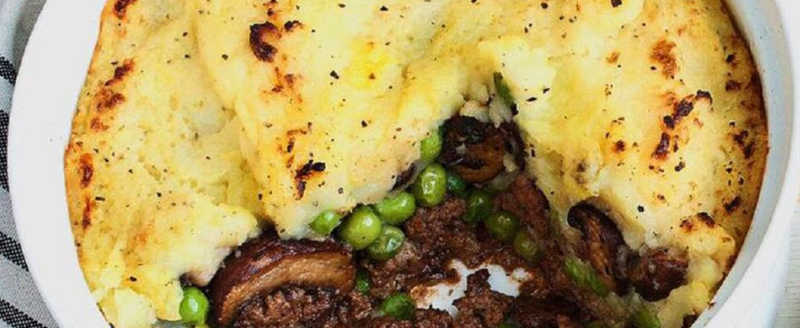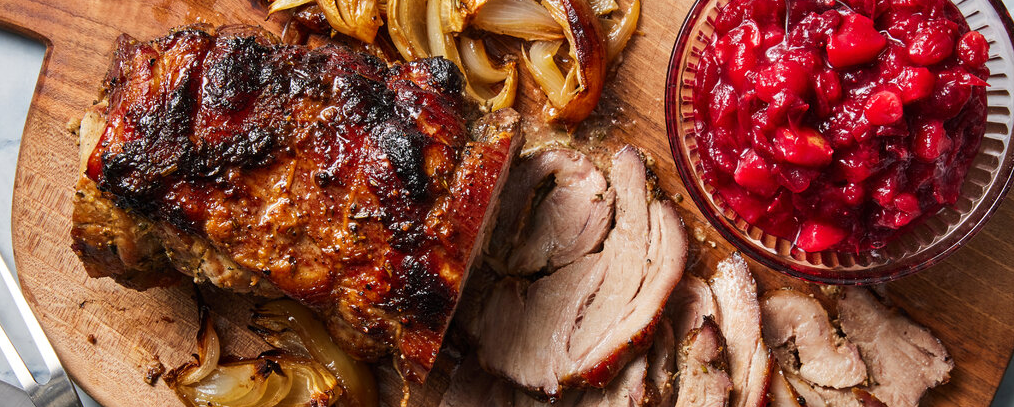Cook Stuffed Pork Chop
How to Cook Stuffed Pork Chops: Oven-Baked Recipe with Cooking Time and Filling Ideas

Stuffed pork chops offer a level of elegance and comfort few other dishes can match. As a chef, I’ve served them at casual weeknight dinners and formal events alike, and they always impress. The beauty lies in the contrast—juicy pork surrounding a flavorful filling, all baked to perfection. And while they may look complicated, they’re quite beginner-friendly when approached methodically.
- Why Stuffed Pork Chops Are Worth Mastering
- Ingredients and Equipment You’ll Need
- Preparing the Pork Chops for Stuffing
- Making the Filling: Flavor, Moisture, and Balance
- How to Bake Stuffed Pork Chops: Step-by-Step
- Internal Temperature and Cooking Time Chart
- Alternative Methods: Skillet, Air Fryer, and Pressure Cooker
- Microwaving Stuffed Pork Chops: When and How
- Seasoning: Building Flavor Without Overpowering
- Sauces That Pair Perfectly with Stuffed Pork Chops
- Common Mistakes and How to Avoid Them
- Stuffing Variations That Always Work
- How to Serve and Plate Like a Professional
- Storing and Reheating Stuffed Pork Chops
- Stuffed Pork Chops for Special Occasions
- How to Plate and Present Like a Professional Chef
- Why This Recipe Works Every Time
- Final Tips for Success
- FAQ: 15 Real Questions About Stuffed Pork Chops (with Chef’s Advice)

Why Stuffed Pork Chops Are Worth Mastering
Baking is my preferred method for stuffed chops because it provides gentle, even cooking. It allows the filling to warm through without drying the meat. When done right, each bite is moist, flavorful, and balanced. With just a few foundational techniques, anyone can master this classic dish.
Ingredients and Equipment You’ll Need
Here’s what I recommend for this recipe, based on years of professional and home testing:
Ingredients:
- 4 thick-cut pork chops (bone-in or boneless, at least 1½ inches thick)
- Olive oil or melted butter
- Salt and freshly ground black pepper
- Garlic powder and onion powder
- Optional spices: paprika, rosemary, thyme
Filling (basic idea):
- 1 cup fresh spinach or kale (chopped)
- ½ cup sautéed onions and garlic
- ½ cup breadcrumbs or cooked rice
- ½ cup shredded cheese (cheddar, mozzarella, or Swiss)
- 1 beaten egg (to bind)
- Optional: chopped apples, sun-dried tomatoes, mushrooms, cooked bacon, or nuts
Equipment:
- Sharp knife for butterflying the pork
- Mixing bowl and spoon for the filling
- Oven-safe skillet or baking dish
- Aluminum foil
- Meat thermometer
These ingredients form a solid base for dozens of variations.

Preparing the Pork Chops for Stuffing
Before anything else, I take the pork chops out of the fridge and let them sit at room temperature for 20–30 minutes. This ensures they cook evenly. Then I butterfly each chop by making a deep horizontal slit in the side, cutting about three-quarters of the way through. The goal is to create a pocket without slicing all the way across.
I season the inside and outside of each chop with salt, pepper, garlic powder, and a touch of rosemary or thyme. I’ve learned that seasoning the inside of the pocket is just as important—it flavors the meat from within.
Once the pockets are seasoned, I loosely pack the filling inside. I avoid overstuffing, which can cause the chops to tear or cook unevenly. If needed, I use toothpicks to secure the edges shut, but often, the natural shape of the meat holds everything in place.
Making the Filling: Flavor, Moisture, and Balance
The filling is where creativity shines. Over time, I’ve come to appreciate balance: a good filling has something soft, something creamy or cheesy, something aromatic, and often something with a bit of crunch or acidity.
I start by sautéing onions and garlic until golden, then add spinach, cooking just until wilted. Once off the heat, I stir in cheese, breadcrumbs, and any extras I like—chopped apples for sweetness, sun-dried tomatoes for depth, or bacon for smokiness. A beaten egg helps bind it all together. I always let the filling cool before stuffing, so it doesn’t prematurely cook the meat or steam the pocket from inside.
This filling doesn’t have to be fancy. I’ve made versions with leftover rice, roasted vegetables, or even mashed potatoes. What matters is that it holds together and complements the pork.
How to Bake Stuffed Pork Chops: Step-by-Step
Once the chops are stuffed and secured, I preheat the oven to 375°F (190°C). I sear each chop quickly in an oven-safe skillet—2–3 minutes per side—just until browned. This adds flavor and helps seal the edges.
After searing, I transfer the skillet to the oven (or move the chops to a baking dish) and bake uncovered for 20 to 30 minutes, depending on thickness. The most reliable sign of doneness is an internal temperature of 145°F (63°C) in the thickest part of the meat—not the filling. I always check with a thermometer.
When the chops are done, I remove them and loosely tent with foil for 5 to 10 minutes. This rest period redistributes the juices and prevents them from leaking out when sliced.

Internal Temperature and Cooking Time Chart
| Thickness | Oven Temp | Time Range | Target Internal Temp |
| 1½ inches | 375°F | 20–25 minutes | 145°F (63°C) |
| 2 inches | 375°F | 25–30 minutes | 145°F (63°C) |
Always measure the temperature at the thickest part of the meat, not in the filling.
Alternative Methods: Skillet, Air Fryer, and Pressure Cooker
While oven baking is my go-to, I’ve tested other methods too. On the stovetop, I sear the chops in a covered skillet with a small splash of broth or wine, then reduce heat and cook for 10–15 minutes. This method works well but risks overcooking the exterior if the filling is cold.
In a pressure cooker, I place the stuffed chops on a trivet with half a cup of broth, then cook on high pressure for 10 minutes followed by 5 minutes natural release. The meat becomes very tender, though the crust is softer.
In an air fryer, I set it to 360°F (182°C) and cook for 12–15 minutes, flipping once. It’s fast and produces a crispy edge, but watch closely—air fryers can cook unevenly with thick cuts.
Microwaving Stuffed Pork Chops: When and How
Microwaving raw stuffed chops is not a method I recommend. It leads to uneven cooking, with the exterior overdone and the filling undercooked. However, for reheating leftovers, I slice the pork chop into thick rounds, place them in a covered dish with a splash of broth, and microwave on 50% power in short bursts. This keeps the meat tender and the filling moist. I avoid microwaving whole stuffed chops unless absolutely necessary.
Seasoning: Building Flavor Without Overpowering
The pork itself is mild and benefits from assertive but balanced seasoning. I focus on garlic, onion, and a touch of earthiness from herbs like thyme or rosemary. I avoid overly sweet rubs unless the filling includes apples or cranberries.
I’ve also used curry spice, smoked paprika, and even Cajun blends in bolder versions—but I always keep the pork and filling in harmony. What you put on the outside should complement, not clash with, the flavors inside.
Sauces That Pair Perfectly with Stuffed Pork Chops
A great sauce doesn’t overpower stuffed pork chops—it lifts the entire dish. Over the years, I’ve developed a few go-to sauces that never fail. One of my favorites is a simple pan sauce made by deglazing the skillet after searing with white wine or broth, then whisking in a spoonful of Dijon mustard and finishing with butter. The result is silky and flavorful, with just enough acidity to cut through the richness.
For something sweeter, I often make an apple cider reduction. I simmer apple cider with shallots, a splash of vinegar, and a pinch of brown sugar until it thickens. This works especially well if the stuffing includes fruit or nuts. Cream-based sauces also have their place—particularly if the filling is more savory. A light rosemary cream sauce or even a garlic-infused béchamel can turn pork chops into a restaurant-level entrée.
When serving to guests, I always finish the plate with just a spoonful drizzled near the meat—not over it—to preserve the crust and let the filling shine.

Common Mistakes and How to Avoid Them
I’ve made—and seen—every possible mistake when it comes to stuffed pork chops. The most common is overstuffing. It’s tempting to pack the pocket full, but too much filling can tear the chop, prevent even cooking, or spill out during searing. I always tell beginners: less is more. A loosely filled pocket cooks more evenly and holds its shape.
Another error is underseasoning the meat. It’s easy to focus only on the filling, but the pork itself needs flavor too. I always season both the inside and outside of each chop. Not letting the pork come to room temperature before cooking is another oversight. Cold meat leads to uneven doneness, where the filling is still cool but the outside is already overcooked.
Lastly, cutting into the pork too soon after baking is a mistake I made early in my career. I now rest stuffed chops under foil for at least five minutes. It helps the juices settle and the stuffing hold together better.
Stuffing Variations That Always Work
After years of experimenting, I’ve landed on a few stuffing combinations that I can confidently recommend. For a classic version, I use spinach, sautéed garlic, breadcrumbs, and mozzarella. It’s mellow, familiar, and universally loved. For a richer flavor, I swap in sautéed mushrooms and Gruyère with caramelized onions—earthy and satisfying, perfect for cooler seasons.
If I want something brighter, I go with chopped apples, fresh sage, sharp cheddar, and toasted pecans. It brings sweetness, crunch, and depth. I’ve even made a Mediterranean version with sun-dried tomatoes, olives, feta, and basil. It’s bold but incredibly well balanced.
What I’ve learned is that great stuffing is about contrast. You need softness and bite, moisture and structure, salt and something slightly sweet or acidic. Once you grasp that, the variations are endless.
How to Serve and Plate Like a Professional
Plating stuffed pork chops is where the dish truly comes to life. After resting, I slice the chop in half on a slight diagonal to expose the filling, then position it at a slight angle on the plate. This gives height and visual interest. I arrange any sides—like mashed potatoes or greens—opposite the chop to balance the plate visually.
I always finish with a small drizzle of sauce around the meat, not directly over it. If I’m using a colorful element like roasted beets, bright slaw, or a purée, I use it to contrast the natural tones of the pork. A small sprinkle of herbs or a dusting of smoked paprika can add the final touch.
Plating should never feel forced. It’s about emphasizing the natural beauty of the food and showing the care you put into cooking it. Even at home, presentation matters.
Storing and Reheating Stuffed Pork Chops
Once stuffed pork chops are cooked and enjoyed, proper storage and reheating become essential to preserving both flavor and texture. I always let the chops cool at room temperature for no more than 30 minutes. Then I store them in an airtight container, separating them with parchment paper if stacking, to avoid moisture accumulation that can make the stuffing soggy. If I plan to eat them within three to four days, refrigeration is ideal. For longer storage, I tightly wrap each chop in plastic and foil, then place them in a freezer-safe bag labeled with the date.
Reheating is all about slow, gentle heat. I recommend placing the chop in a baking dish with a splash of broth, cider, or even water, covering it with foil, and warming it in a preheated 300°F oven for about 15–20 minutes. This method brings the filling back to temperature without overcooking the meat. When I reheat in the microwave—usually only for leftovers the next day—I do so at 50% power in short intervals, covered with a damp paper towel. I never microwave the whole chop without slicing it into thick rounds first, as this ensures more even reheating from edge to center.

Stuffed Pork Chops for Special Occasions
When I serve stuffed pork chops for a holiday or special dinner, I treat the dish like a centerpiece. I often choose bone-in chops for presentation and use premium fillings like wild mushrooms with truffle oil or roasted squash with goat cheese and thyme. Before baking, I sometimes dry-brine the chops overnight in the refrigerator, which deeply enhances flavor and texture. After brining, I rinse and pat them dry, then season as usual.
During service, I slice each chop just enough to reveal the filling but keep the structure intact. On the plate, I pair them with elevated sides such as Parmesan polenta, herb-roasted carrots, or celery root purée. A drizzle of pan reduction or infused oil, along with a few microgreens or roasted shallots, completes the look.
These extra steps are not just for show. They communicate care, skill, and hospitality. Over the years, I’ve found that people remember not only the flavor of a meal but how it made them feel. And nothing feels more thoughtful than a perfectly cooked, beautifully plated stuffed pork chop.
How to Plate and Present Like a Professional Chef
Plating stuffed pork chops well means giving structure, contrast, and a sense of occasion to your meal. After resting, I slice the chop partially or fully, depending on the aesthetic I want. When partially sliced on a diagonal, the cut reveals the filling without collapsing the entire structure. I tilt the top portion slightly to expose the stuffing and create height on the plate.
The sides I choose are arranged purposefully. If I use creamy elements like mashed potatoes or a purée, I form a soft base and lean the pork against it. Vegetables, when roasted or grilled, are fanned beside or underneath to add visual variety and color. I often finish with a thin ribbon of sauce drizzled around—not on—the meat. This protects the crust while adding richness and depth.
To complete the plate, I may use a fresh herb like parsley or thyme for color, or a citrus zest curl for brightness. The idea isn’t to make the dish look busy—it’s to make it feel complete. Even at home, attention to plating brings out the best in the food and shows pride in your work.
Why This Recipe Works Every Time
Stuffed pork chops succeed when flavor, moisture, and timing come together. What makes this oven-baked method so reliable is how it balances high-heat searing with gentle baking. The initial browning locks in flavor, while the low oven temperature ensures the meat cooks evenly without drying out the exterior or leaving the filling undercooked.
Over the years, I’ve tried dozens of variations: with bone, without, pan-seared only, fully roasted, slow-baked with foil, or uncovered with a glaze. The version I’m sharing in this recipe consistently delivers the best combination of crust, tenderness, and integrated flavor. It allows room for creativity while offering structure for those new to the technique.
What I love most is how forgiving the process is. Even if your chop is slightly over- or under-stuffed, or if your filling isn’t perfect, the dish still works. It’s the kind of meal that welcomes experimentation and grows with your confidence in the kitchen.
Final Tips for Success
If I could leave you with a few final thoughts on cooking stuffed pork chops, it’s this: trust your senses and your timing. Listen to the sizzle when you sear—it should be firm but not aggressive. Feel the resistance when you press the chop—it should give slightly without feeling raw. Smell the aromatics as they release from the filling—it should make you hungry.
Don’t rush. Allow time to rest, time to reduce a sauce, and time to taste before plating. I’ve learned through experience that the best meals are not necessarily the most complex, but the most cared for. When you season with intention, cook with patience, and present with pride, you’ve already won.
Stuffed pork chops may seem like a restaurant-only dish, but they belong just as much on your home table. They are deeply satisfying, endlessly customizable, and—when done right—unforgettable.
FAQ: 15 Real Questions About Stuffed Pork Chops (with Chef’s Advice)
How do I prevent the filling from falling out while cooking?
From my own kitchen trials, I’ve found that the key is not overfilling. I always leave a little space inside the pocket so the filling can expand slightly without being forced out. If I feel it’s a looser filling, I use toothpicks to close the chop’s opening. Also, a good sear before baking helps seal the edges and create a firmer structure around the stuffing.
How thick should the pork chops be for stuffing?
I recommend chops that are at least 1½ inches thick. Anything thinner becomes difficult to butterfly and risks tearing. I’ve tried thinner cuts in a pinch, but the margin for error is much smaller. The extra thickness allows for a good-sized pocket and helps retain moisture during baking.
What’s the best cheese to use inside stuffed pork chops?
I’ve tested everything from cheddar to goat cheese. My go-to is mozzarella or Swiss for their meltability and mild flavor. When I want more complexity, I use Gruyère or a soft goat cheese. I avoid very salty cheeses like feta unless I balance it with sweeter ingredients like apples or caramelized onions.
Can I prepare stuffed pork chops in advance?
Absolutely—I do this often. I assemble the stuffed chops, cover them tightly, and refrigerate for up to 24 hours before baking. In fact, chilling them for a few hours helps the filling firm up, making them easier to handle. Just make sure to let them sit at room temperature for 20–30 minutes before searing and baking.
What’s the best way to reheat leftover stuffed pork chops?
I recommend reheating in the oven at 300°F (150°C), covered with foil and a splash of broth or pan juices. I’ve tried the microwave, and while it works in a pinch, it tends to dry out the edges. For the best result, low and slow is the way to go.
Should I use bone-in or boneless pork chops?
Both work, and I’ve cooked them many times. Boneless chops are easier to butterfly and stuff, but bone-in chops stay juicier and offer more flavor during cooking. For special occasions or presentation, I lean toward bone-in. For ease and speed, boneless is the better choice.
How do I know when the pork is fully cooked?
I always use a meat thermometer and look for an internal temperature of 145°F (63°C) at the thickest part of the meat. I avoid relying on visual cues alone, since stuffed chops can brown nicely while still being undercooked inside. Thermometers never lie—that’s a lesson I’ve learned the hard way.
Can I freeze stuffed pork chops?
Yes, and I often prep them in bulk this way. I freeze them raw, stuffed, and tightly wrapped in plastic and foil. When ready to cook, I thaw them in the fridge overnight. You can also freeze cooked ones, but reheating can dry them out if you’re not careful. I prefer freezing them uncooked when possible.
What sides go best with stuffed pork chops?
I like to pair stuffed pork chops with something creamy and something crisp. Mashed potatoes and roasted Brussels sprouts, or polenta and a bright slaw. For lighter meals, a salad with citrus vinaigrette works beautifully. I recommend avoiding sides that are too salty or dense, as the chops already carry a lot of flavor.
Can I use store-bought stuffing instead of homemade?
You can, and I’ve done it when short on time. I enhance boxed stuffing with sautéed onions, garlic, herbs, and sometimes cheese or apples. Homemade will always taste better, but a high-quality shortcut can still deliver a delicious result if you treat it with care.
How do I stop the pork from drying out in the oven?
The trick is two-fold: don’t overcook, and don’t skip the resting stage. I pull the chops at 145°F internal temp and let them rest under foil for at least five minutes. I also make sure there’s enough fat in the filling—cheese, sautéed onions, or butter all help retain moisture.
Can I grill stuffed pork chops instead of baking?
Yes, but it requires more attention. I’ve grilled them over indirect heat after a quick sear, and they turn out great if the grill stays around 375°F. You have to watch for flare-ups and make sure the filling stays secure. I usually use a foil pan to help manage drips and avoid charring the outside too quickly.
What fillings should I avoid?
Based on my own experience, I avoid anything too wet or raw, like fresh tomatoes or raw eggs (unless bound properly). They release too much moisture and can cause the pork to steam instead of roast. I always cook veggies and drain excess liquid before mixing them into stuffing.
Do I need to sear the chops before baking?
I highly recommend it. Searing gives you a flavorful crust and helps close the edges of the stuffing pocket. It also shortens the baking time slightly and boosts the overall texture. In my kitchen, searing is a must unless I’m cooking entirely in the oven under foil.
What’s your personal favorite stuffed pork chop combo?
One of my favorites combines caramelized onions, sautéed mushrooms, Gruyère cheese, and a touch of rosemary. I stuff thick bone-in chops with this mix and serve them with garlic mashed potatoes and a drizzle of mustard pan sauce. I’ve made this version for clients and family alike—it’s always a hit.



Post Comment